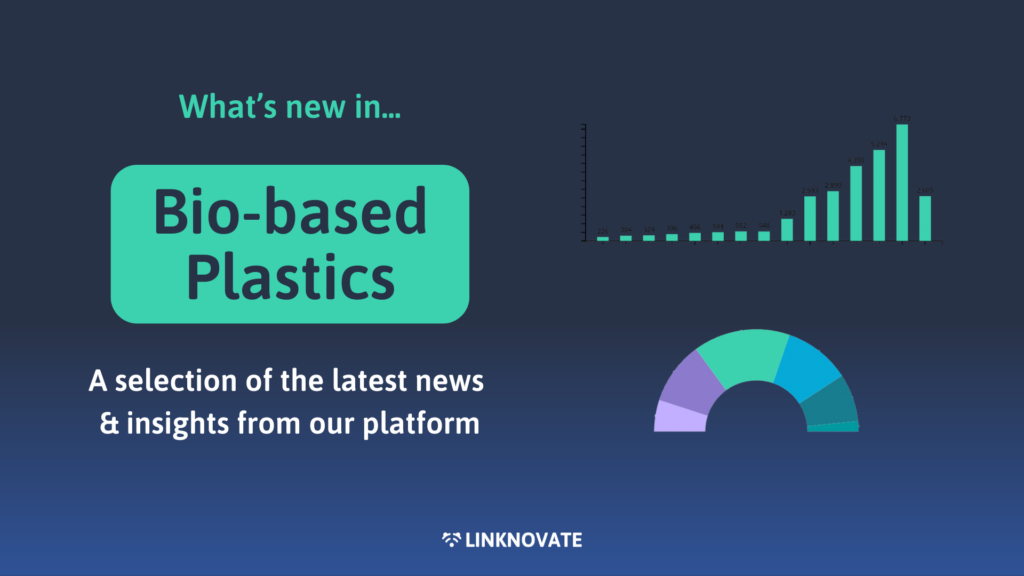The world of plastics is undergoing a significant transformation as the demand for sustainable materials increases. Bio-based plastics, derived from renewable resources like plants and microorganisms, offer an eco-friendly alternative to traditional petroleum-based plastics.
The shift toward these greener materials has accelerated over the past decade, as indicated by data from Linknovate’s innovation scouting platform InnoScout, with a remarkable rise in research, publications, and technological advancements in this field.
In this blog post, we delve into the latest trends shaping the bio-based plastics industry and highlight the key players leading the charge, with a special focus on startups. And if you want to check the latest innovation news and more insights about the topic, don’t miss our free mini-report “What’s new in…Bioplastics”. ⬇️
The Boom in Bio-Based Plastics: A Positive Outlook for 2024
The research and development (R&D) landscape for bio-based plastics has seen a notable surge in activity, with records from the past five years suggesting rapid growth in innovation. From 2010 to 2023, publications, patents, and funding news in this area have multiplied, reflecting a strong global push toward sustainability and environmental responsibility.
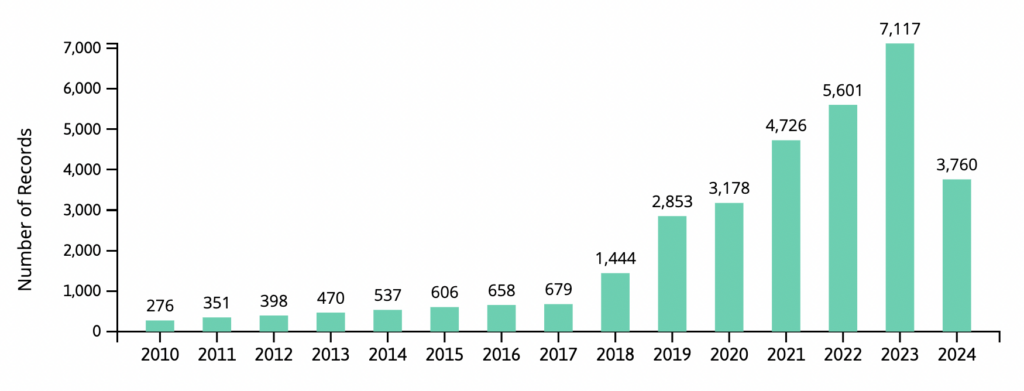
The big question is: will this positive trend continue into 2024? Signs point to a resounding yes. As environmental regulations tighten and consumer demand for sustainable products grows, the bio-based plastics industry is poised to maintain its upward trajectory.
This momentum is driven not only by industry giants but also by a wide array of small and medium-sized businesses (SMBs) contributing over 40% of the R&D in this sector.
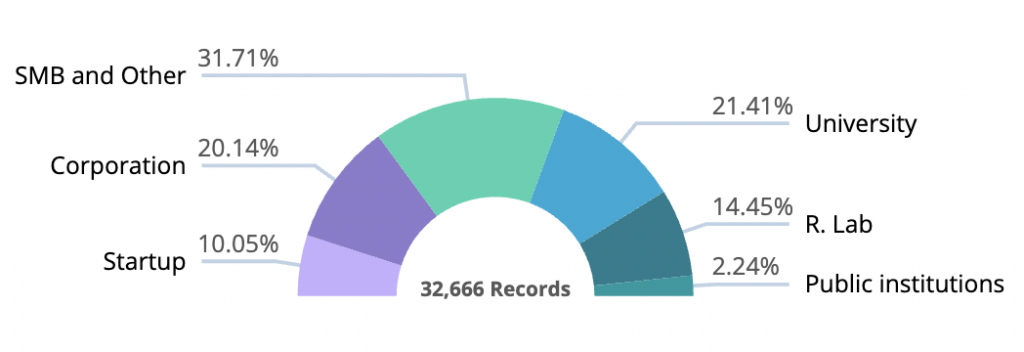
Emerging Trends and Players: SMBs and Startups Leading Innovation
While large corporations and established players in the chemical and manufacturing industries are making significant investments in bio-based plastics, the true drivers of innovation are small and medium-sized businesses (SMBs) and startups. These agile and research-focused companies are more willing to experiment with novel materials and pioneering production techniques, often pushing the boundaries of what’s possible in sustainable plastics.
As the bio-based plastics industry evolves rapidly, diverse new materials and cutting-edge production methods are emerging. Below, we highlight five of the most promising trends shaping the future of this industry, along with emerging players driving innovation in each area.
1. Algae-Based Plastics
Algae-based plastics are becoming a popular choice for companies looking for sustainable and scalable alternatives to traditional plastics. Algae grows quickly and requires minimal resources, making it an eco-friendly material for bioplastic production.
One of the key innovators in this space is Kelpi, a UK-based B Corp certificated company that has secured £4.35M (€5M) to bring its seaweed-based packaging materials to market. Kelpi’s materials are fully biodegradable and compostable, positioning the company as a leader in sustainable packaging solutions. Notpla is also a leadr in this sector, proposing algae-based films and other cutting-edge solutions for sustainable packaging.
2. Lignin-Based Plastics
Lignin, a natural polymer found in the cell walls of plants, is now being utilized to create bioplastics. As a byproduct of the paper and pulp industry, lignin is both abundant and underutilized, making it a promising raw material for sustainable plastics.
Swedish startup Lignine Industries is a rising player in this field, as they discovered and patented a technique to transform lignin into molded plastics and packaging for both consumer and industrial application. The company raised kr25M (€2.2M) through a share issue this year, which they plan to spend on bolstering their position in the market.

3. Organic Waste-to-Bioplastics
Converting organic waste into bioplastics is gaining traction, particularly in light of growing efforts to implement circular economy models. This trend involves using food waste, agricultural byproducts, or other organic materials as feedstocks for producing biodegradable plastics and is catching the attention of European public institutions that boosted the grants dedicated to projects related to sustainable waste management though novel bioplastics.
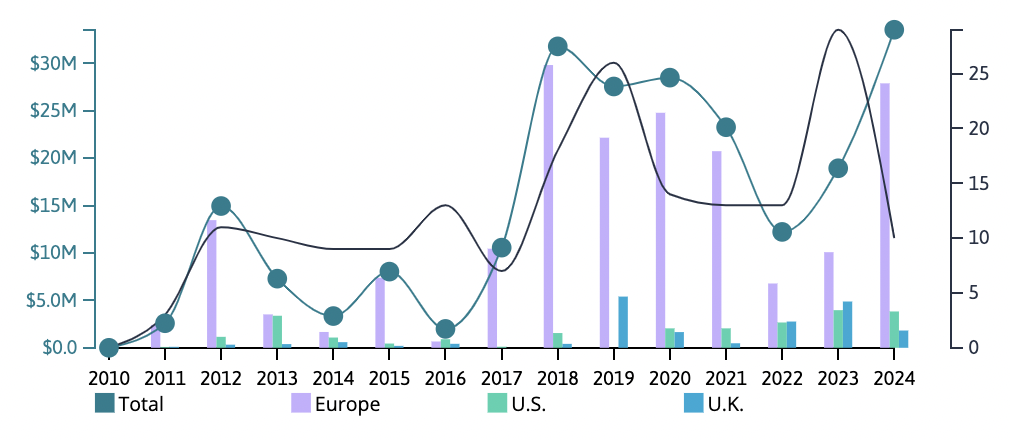
One notable example is Traceless, a female-founded bioeconomy startup that transforms agricultural residues into a fully biodegradable plastic alternative. After raising a €36M Series A funding round in 2023 to scale its innovative materials, they recently partnered up with global packaging giant Mondi to incorporate their eco-friendly materials into mainstream packaging solutions.
4. Starch-Based Plastics
Starch is a readily available and renewable resource, and thermoplastic starch (TPS) is already being used in a variety of bioplastic applications, including food packaging and disposable products. Starch-based plastics are biodegradable and compostable, making them a strong candidate for replacing conventional single-use plastics.
BiologiQ is an emerging company that focuses on developing high-quality starch-based bioplastic resins. Their proprietary process converts high crystalline starch powder into a low crystalline (mostly amorphous) plastic resin, designed to function in a wide range of applications, from food packaging to agricultural films.
5. CO2-Based Bioplastics
The use of captured carbon dioxide (CO2) to produce bioplastics is an exciting trend, as it addresses both the problem of plastic pollution and the challenge of reducing greenhouse gas emissions. By converting CO2 into polymers, companies can create sustainable materials while mitigating environmental impact.
Newlight Technologies is a pioneer in this space, producing a bioplastic called AirCarbon, which is made from methane and CO2. AirCarbon is not only biodegradable but also carbon-negative, meaning that its production sequesters more carbon than it emits, offering a unique solution to both plastic pollution and climate change.
Another growing player Fairbrics, a sustainable materials startup focused on developing innovative technology to create carbon-negative textiles. The company transforms captured CO2 emissions into polyester fabrics, offering an eco-friendly alternative to traditional petroleum-based textiles. By converting carbon dioxide into raw materials for clothing, Fairbrics aims to reduce the environmental impact of the fashion industry and contribute to a more sustainable circular economy.
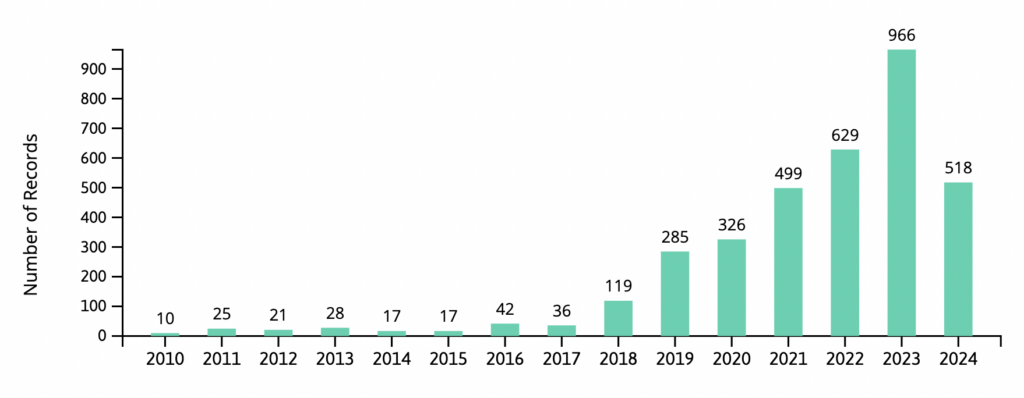
Conclusion
The bio-based plastics industry is witnessing rapid innovation, driven by emerging trends like algae-based and lignin-based plastics, as well as advancements in converting organic waste and CO2 into biodegradable materials. Startups and SMBs like Kelpi, Lignine Industries, Traceless, BiologiQ, and Newlight Technologies are leading the way, pushing the boundaries of what’s possible in sustainable material science.
As these technologies mature, we can expect to see even more breakthroughs that will help reduce the world’s reliance on petroleum-based plastics and mitigate the environmental challenges posed by plastic waste. The future of bio-based plastics looks bright, with innovation driving the industry toward a more sustainable and circular economy.
If you want to check more insights about bio-based plastics, download our free report “What’s new in…Bioplastics”.
Linknovate Science S.L. en el marco del Programa ICEX Next, ha contado con el apoyo de ICEX y con la cofinanciación del fondo europeo FEDER. La finalidad de este apoyo es contribuir al desarrollo internacional de la empresa y de su entorno.





